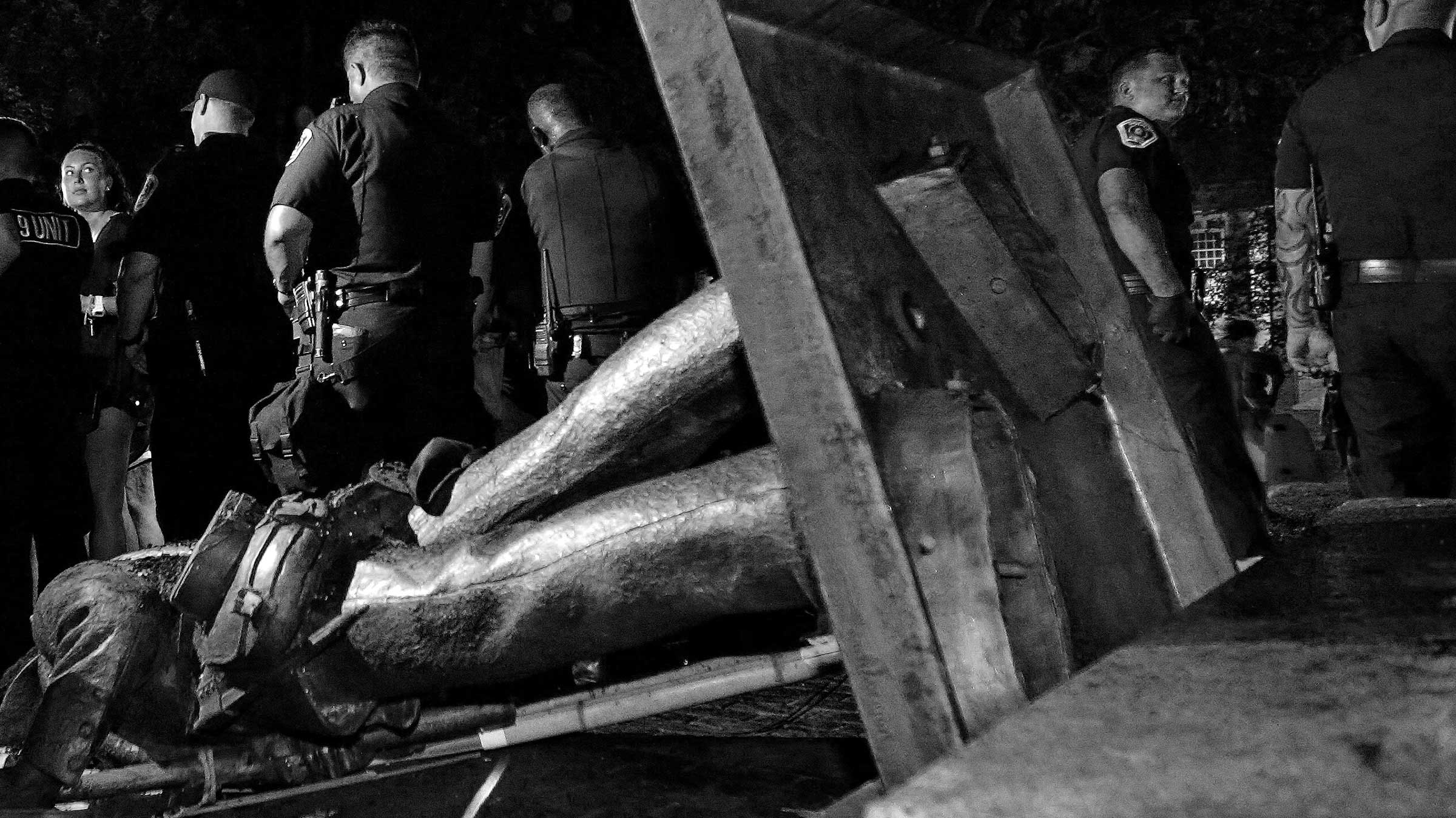This week, students at the University of North Carolina toppled Silent Sam, a Confederate statue that has stood since 1913.
The toppling of the Silent Sam, a statue that has stood at the University of North Carolina at Chapel Hill since 1913, marks another chapter in the bid to pivot national attitudes about America’s Confederate past.
On Monday night, a group of demonstrators decided to take down the divisive monument, despite the university saying their hands were tied as to whether or not they should officially step in and remove the piece.
After the statue tumbled, Chancellor Carol L. Folt addressed the contentious nature of Silent Sam, but condemned the intervention that led to the statue’s demise, calling it “unlawful and dangerous.”
In an opinion piece for the New York Times, scholars of Civil War memory and alumni of the University of North Carolina—Ethan Kytle and Blain Roberts—suggest the empty pedestals that once housed Confederate statues should be left as a reminder to the point in time when they were no longer considered celebrated moments in history. Instead, they should serve as a stark reminder of how attitudes change and the progressive nature of society should never fall short of embracing what the scholars deem as “bad history”.
In the letter, the pair of scholars says staying continually blinkered to the statue’s presence is another way of overlooking our country’s complex an often uncomfortable past: “Confederate monuments obscure this history, thereby perpetuating the Lost Cause lie that slavery was not the central cause of the Civil War. In short, they’re bad history.”
It’s a perspective that clearly resonates with the state Historical Commission, who are currently in the process of deciding the fate of a further three other statues. If successful, they’ll be relocated to sites of historical importance, helping to preserve and contextualize them. Back in May, the state attorney general’s office recommended that the monuments be reinterpreted, but they can’t be altered in that process.
Sites of academia may be unsure of how to preserve the past, equally fearful of both erasing history and giving it undue prominence, one thing is clear—despite a tidal change in how we mark relics of racist history, Confederate iconography is still being used as a divisive emblem.
This past Monday, a black teenager attending The Willamette Country Music Festival in Oregon took offense at a pick-up truck waving the Confederate flag en route to a Kid Rock performance and shouted at the driver. According to official reports, a man then stopped the car, got out and proceeded to argue with the teenager, before he and another assailant beat up the 18-year-old, landing him in hospital.
As our institutions grapple with how to articulate the past, the issue over Confederate statues presiding over the entrances and grounds designed to house new streams of thought isn’t about retrospection. People still bear the brunt of attitudes gestated during of our darkest historical hours, and how we chose to display Confederate monuments is indicative of how we, as a whole, want to move forward.








